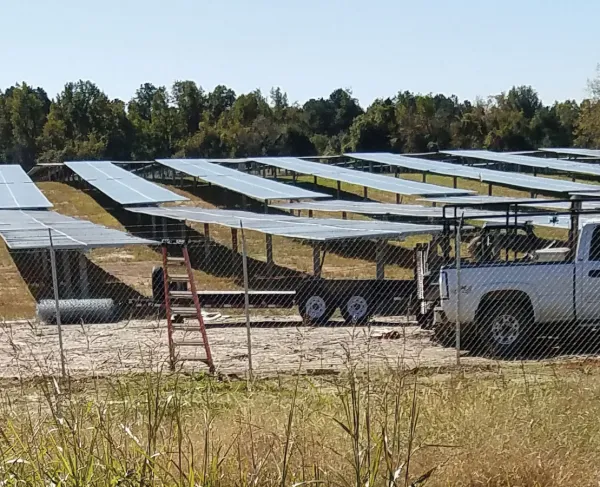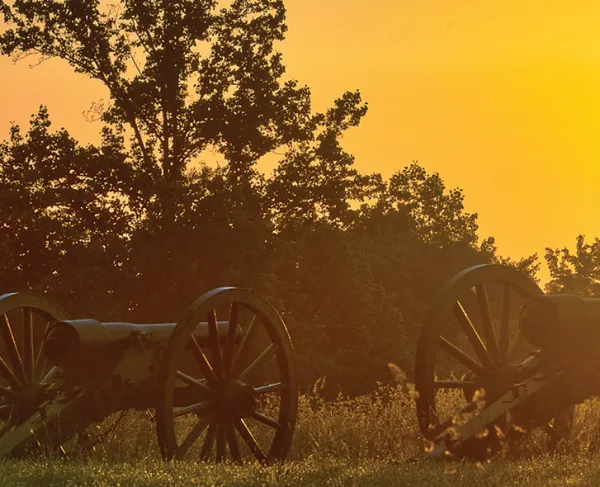Preservation Groups Offer Roadmap to Scale Solar Energy and Protect Historic Resources
(Richmond, Va.) – A new report by a trio of preservation advocacy groups offers best practices for the expansion of utility-scale solar energy, so the growth of this important 21st century infrastructure will not encroach on Virginia’s many historic landscapes and resources. In fact, the movement toward renewable rather than finite energy resources is more than compatible with historic preservation — proactive consideration of the past can even increase the likelihood of permitting success for such projects.

In Siting Solar in Virginia: Protecting Virginia’s Historic Landscapes While Meeting State’s Clean Energy Goals, the American Battlefield Trust — a Washington, D.C.-based nonprofit dedicated to protecting hallowed ground dating to the Revolutionary War, War of 1812 and Civil War — Cultural Heritage Partners, a law and policy firm with offices in Washington and Richmond, and Preservation Virginia, the nation’s oldest state-wide preservation organization, offer a roadmap for how utility-scale solar developers can thoughtfully address historic resources in their projects and help distinguish themselves as leaders for the rest of the country on solar projects.
“While they may lack the harmful emissions of traditional power plants, solar energy facilities can still leave lasting impacts,” said American Battlefield Trust President David Duncan. “Unlike individual or commercial solar installations that occupy unobtrusive rooftops, utility-scale solar facilities may occupy hundreds or thousands of acres — and given the density of historic resources in the Old Dominion, those acres could very well be important to the story of American democracy.”
Virginia already has a growing appetite for utility-scale solar, rising two spots since 2019 to become the 17th-ranked state in installed solar. That demand is expected to further skyrocket following the 2020 passage of the Virginia Clean Economy Act, which commits the Commonwealth to transitioning to 100 percent carbon-free electricity by 2050 — an ambitious goal that will require significant increases in capacity for solar and wind energy. But where to put these facilities in a state with such a concentration of important landscapes?
“One of the day’s most contentious issues in utility development is the visual effect of these facilities on the surrounding landscape — a solar ‘farm’ is a far cry from a traditional ‘farm’ in such terms. And it can shift the way that visitors experience and connect with historic resources,” said Preservation Virginia Chief Executive Officer Elizabeth Kostelny. “We believe that with advance planning and a context-sensitive approach, developers can avoid the tension that emerges when these interests abut.”
After examining a variety of real-world cases, Siting Solar in Virginia offers a series of recommendations for developers and identifies resources for planning successful projects. The report focuses on promoting responsible, consensus-based approaches and mitigation strategies.
“Preservation and clean energy goals are compatible,” said Will Cook, special counsel for Cultural Heritage Partners. “Following the best practices in this report will help ensure that utility-scale solar energy facilities are consistent with community preservation values.”
Solar development continues at a rapid pace in the Commonwealth, including in areas of considerable historic significance. Dinwiddie County is currently considering a proposal that could impact two Civil War battlefields. Meanwhile, the sPower facility approved by Spotsylvania County, which will be one of the largest solar installations in the country, successfully avoids notable impacts to major nearby battlefields. The American Battlefield Trust previously drafted suggested policy language to assist communities in evaluating solar applications based on impacts to battlefields and related resources. Culpeper County, which encompasses major Civil War battlefields of Brandy Station and Cedar Mountain, included this language in their utility-scale solar facility development policy.
Read the full report, Siting Solar in Virginia: Protecting Virginia’s Historic Landscapes While Meeting State’s Clean Energy Goals, at www.battlefields.org/solar.
About the team behind Siting Solar in Virginia:
The American Battlefield Trust is dedicated to preserving America’s hallowed battlegrounds and educating the public about what happened there and why it matters today. The nonprofit, nonpartisan organization has protected more than 53,000 acres associated with the Revolutionary War, War of 1812, and Civil War. Learn more at www.battlefields.org.
Cultural Heritage Partners, PLLC, is a mission-driven law and policy firm that helps tribes, responsible project proponents, local governments, and communities achieve creative, win-win outcomes that appropriately balance preservation values and development needs. Learn more at www.culturalheritagepartners.com.
Preservation Virginia is a private, nonprofit organization and statewide historic preservation leader that is dedicated to preserving, promoting and serving as an advocate for Virginia’s cultural and architectural history. Learn more at www.PreservationVirginia.org.
###




